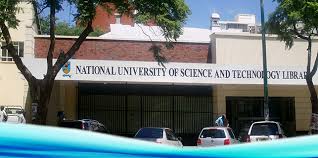 THE National University of Science and Technology (Nust) is operating under a $4,7 million bank overdraft, which comes with a high cost compared to other sources of borrowing, as it battles financial challenges, a new report reveals.
THE National University of Science and Technology (Nust) is operating under a $4,7 million bank overdraft, which comes with a high cost compared to other sources of borrowing, as it battles financial challenges, a new report reveals.
Bank overdraft is a temporary facility extended by a bank to corporates and other clients to withdraw funds from their account in excess of the balance.
The facility is provided by the bank for a fee and interest is charged on the excess amount that is withdrawn for the length of the time.
According to the Nust’s 2016 Vice-Chancellor’s annual report, the institution operated under a $4,7 million bank overdraft compared to $3,7 million it reported in 2015.
Revenues totalled $43 million, resulting in a deficit of $2,7 million. However, net cash flows from operating activities were positive after accounting for depreciation.
In the period under review, Nust reported a loss of $9,3 million compared to $3,7 million in the previous year.
Expenditure per student increased by 1,1% to $4 759 while income rose by 3,6% to $4 467.
Over the five-year period from 2012 to 2016, the average expenditure per student for science, technology, engineering and mathematics (STEM) disciplines was $4 722 against $2 815 for non-STEM students, reflecting the funding pressures that will be associated with higher STEM enrolment in future.
“This, however, can be mitigated by higher postgraduate enrolment for which fees are typically as much as 50% higher, and increased international student enrolment-which is associated with a higher cap on fees,” read the report prepared by the institution’s bursar, Fortune Nkomo.
“As a result of a coterie of cost containment and revenue generation measures, efficiency savings are expected to eventually move the university operating’s income to a position of surplus over expenditure.”
Assuming full implementation of measures mentioned, Nkomo said the university was expected to balance its annual budget and pay off its overdraft in the next three years.
“The increase in STEM enrolment to 70%, which carries a higher cost structure will require new interventions in order to ensure a balanced budget. A drive for an international students enrolment in the region of 20% is one such initiative,” he said.
He, however, said overall investment per student should eventually rise to at least equal such investment in neighbouring South African universities, which were often more than three times the Nust level of expenditure per student.
“This is important not only to improve services to the client-the student — but also to advance the internationalisation thrust and improve university rankings.








0 comments:
Post a Comment